One of the most powerful birds that hunt for their food are the hawks. Some of these incredible birds have heads covered in beautiful white feathers. Which makes them stand out from other birds. These hawks are not only unique but also fascinating.
In this article, we’ll take a closer look at 10 Stunning Hawks with White Heads. We will also discover how they hunt, where they live, and why their appearance is so remarkable.
10 Stunning Hawks with White Heads
1. White Hawk

- Scientific name: Pseudastur albicollis
- Size: 18 – 22 inches
- Wingspan: 3.2 feet
- Conservation Status: Not Endangered
The white hawk is a stunning bird that’s completely white. But its feathers have black lines. These amazing birds live mainly in Central and South America. They eat meat and like to hunt lizards, snakes, and other small animals. White hawks build their nests high up in trees using sticks and leaves. They look really impressive when they fly high in the sky. And are fascinating to see in their natural home.
2. Osprey

- Scientific name: Pandion haliaetus
- Size: 20 – 26 inches
- Wingspan: 4.2 – 5.9 feet
- Conservation status: Not Endangered
The Osprey is a daytime bird that lives almost everywhere except Antarctica. They live near oceans and lakes. These birds are really good at catching fish. They dive into the water and grab fish with their claws. They’re specially built for fishing.
Even though they mostly eat fish, sometimes they eat small animals like mammals, birds, or reptiles. Ospreys make big nests using sticks.
They build these nests in trees, cliffs. Their nests can be homes for other small animals too. Besides all the unique features, Ospreys also have reversible toes. This is what makes them special. Letting them grab things with four claws on their feet.
3. Ferruginous Hawk
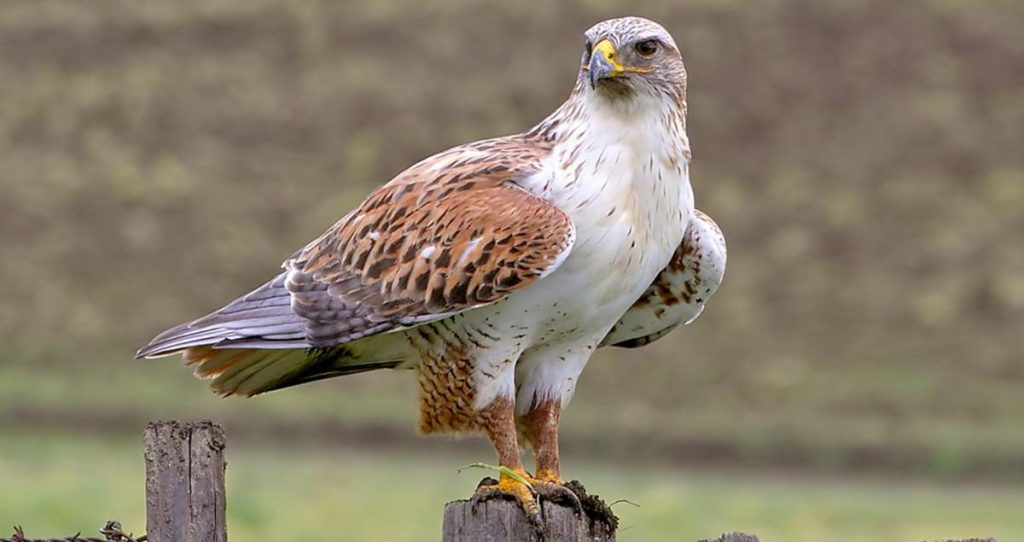
- Scientific name: Buteo regalis
- Size: 20 – 25 inches
- Wingspan: 4.4 – 4.7 feet
- Conservation status: Not Endangered
The Ferruginous Hawk is a huge bird. The feathers can be light or dark brown, and it often has rusty colours on its shoulders. These hawks like living in wide-open places like grasslands and deserts. They mostly eat small animals like rabbits and squirrels.
But they also hunt birds and reptiles. They build their homes using sticks. They make their nests comfortable with grass or feathers inside.
Ferruginous Hawks are useful because they keep the number of rodents in check. This greatly helps the ecosystem to be balanced.
4. Rough-legged Hawk
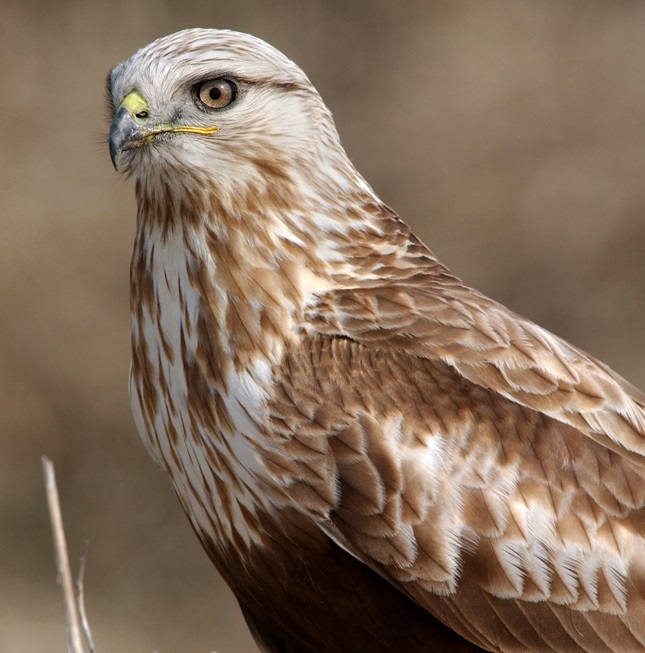
- Scientific name: Buteo lagopus
- Size: 18 – 24 inches
- Wingspan: 3.5 – 4.8 feet
- Conservation status: Not Endangered
The Rough-legged Hawk is a medium-sized hawk that lives in open fields in North America, Europe, and Asia. They’re very different from other hawks because their legs are feathered. Their feathers are a mix of dark and light colours.
These hawks have a very unique way to hunt their prey. They have UV vision which helps them see the urine trail of animals like rodents.
The trail usually shines bright yellow to them. These hawks prefer building their nests high on cliffs or raised places. They have a high and loud scream.
5. Mantled Hawk

- Scientific name: Pseudastur poliontus
- Size: 18.5 – 20 inches
- Wingspan: 3.8 – 4.2 feet
- Conservation status: Near Endangered
The Mantled Hawk is a medium-sized hawk found in South America. It’s known for its white head and black mantle on its body. Just like other hawks, it’s good at hunting and eats small animals such as mammals, reptiles, insects, and sometimes birds.
These hawks build their nests in trees using sticks and twigs. And they usually build their nest up high among the trees. People who love birds find the Mantled Hawk fascinating to watch. Because of its cool looks and how it flies in the sky.
6. White-necked Hawk

- Scientific name: Buteogallus lacernulatus
- Size: 18.5 – 20 inches
- Wingspan: 3.8 – 4.2 feet
- Conservation status: Vulnerable
White-necked hawks are big birds with white heads. They’re often seen in Central and South America. They eat insects, small animals like rodents and birds, and sometimes reptiles.
These hawks make loud calls to talk to each other and mark their territory. The female hawk usually lays 2 to 3 eggs. Both parents take turns keeping the eggs warm until they hatch. White-necked hawks are losing their habitats because of deforestation.
7. Gray Goshawk

- Scientific name: Accipter novaehollandiae
- Size: 18 – 22 inches
- Wingspan: 2.9 – 3.6 feet
- Conservation Status: Not Endangered
The Gray Goshawk are medium-sized birds found in Australia, Papua New Guinea, and Solomon Islands. There are two types of Goshawk, one with all white feathers and another with grey on its head and back.
The Grey Goshawk are really good at flying and hunting their prey. These hawks not only eat birds but also small animals, and reptiles. They like to catch them by surprise from high trees. These birds live in different kinds of forests, even in towns and near the sea.
8. Long-legged Buzzard
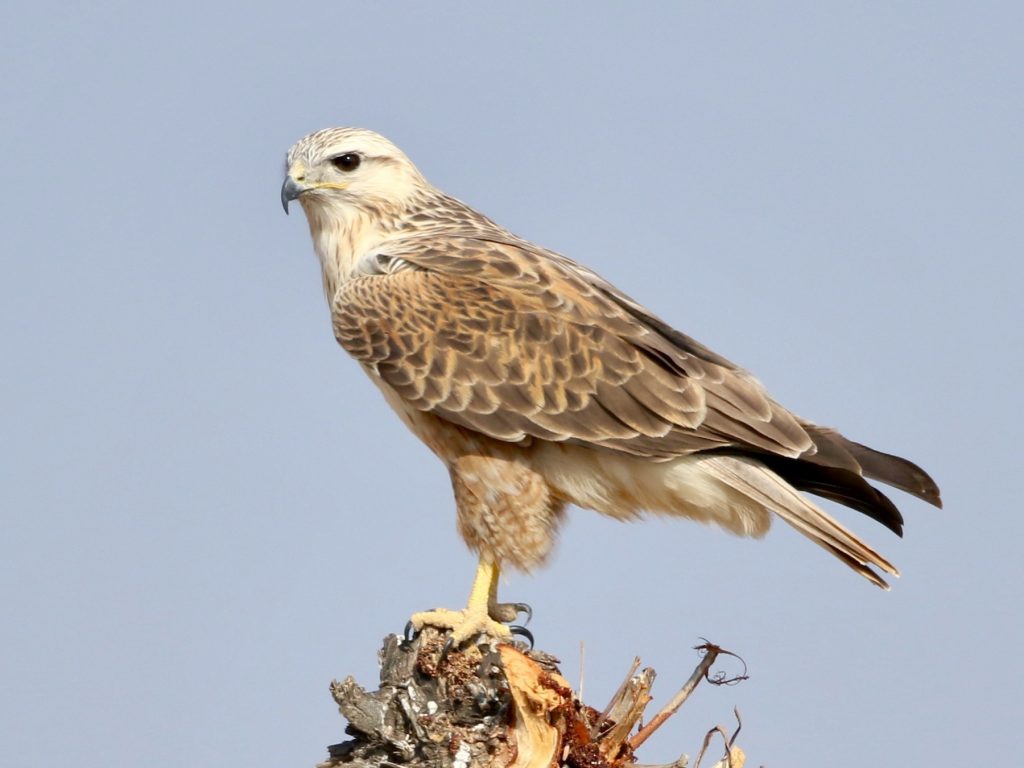
- Scientific name: Buteo rufinus
- Size: 20 – 26 inches
- Wingspan: 4.4 – 5.3 feet
- Conservation Status: Not Endangered
The Long-legged Buzzard is a big bird that hunts in open places like desert fields, cliffs, and farms. They can be found in many parts of Europe, Asia, and Africa. These birds have different shades of brown feathers with a light head and belly.
Usually, these birds fly high up in the sky and search for their food on the ground. Because of their good eyesight, they can see things moving from far away. Buzzard’s make their homes on rocks or trees. And lay around 1 to 6 eggs that are white with brown spots.
9. Black-faced Hawk
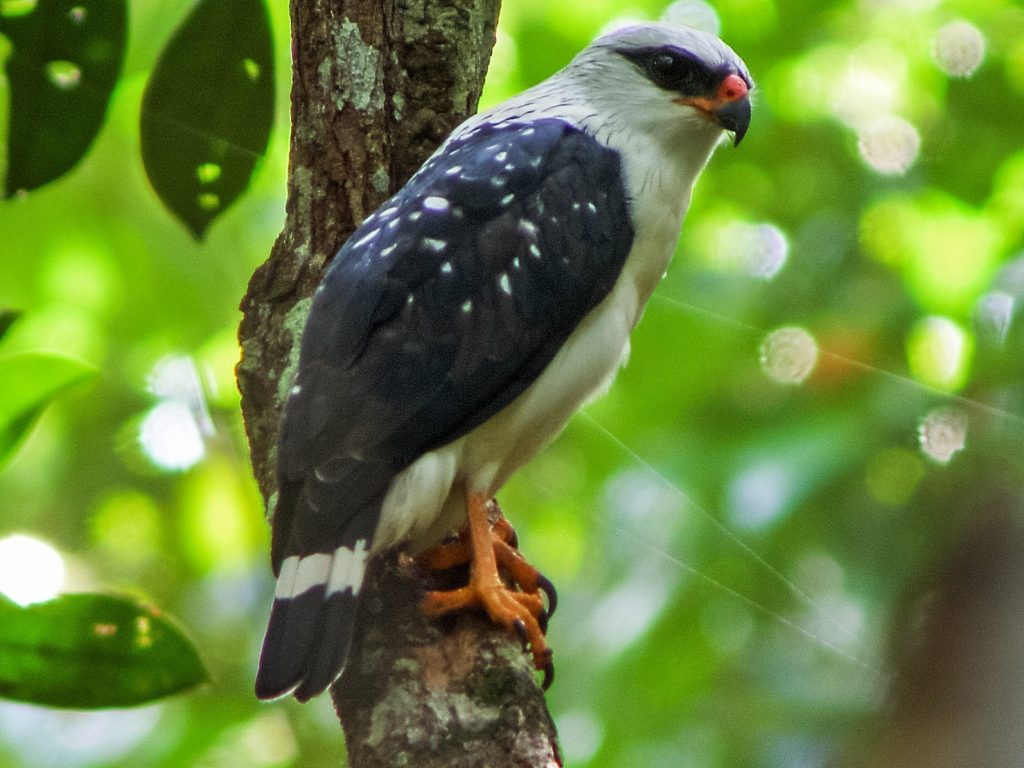
- Scientific name: Leucopternis melanops
- Size: 14.9 – 16.1 inches
- Wingspan: 2.9 – 3.9 feet
- Conservation status: Not Endangered
- Wingspan: 2.9 – 3.9 feet
- Conservation status: Not Endangered
Black-faced hawks have big white heads with black masks on their faces. And black backs with white stripes near their tails. These birds fly high in the skies of South America, Central America, and Mexico. They can be easily spotted in forests near rivers and places.
Like other hawks, Black-faced hawks mostly eat little animals like small mammals, birds, reptiles, and big insects. They prefer making their nests in trees using sticks, twigs, and other things. The female hawk lays eggs and both parents help take care of the baby birds.
10. White-bellied Sea Eagle
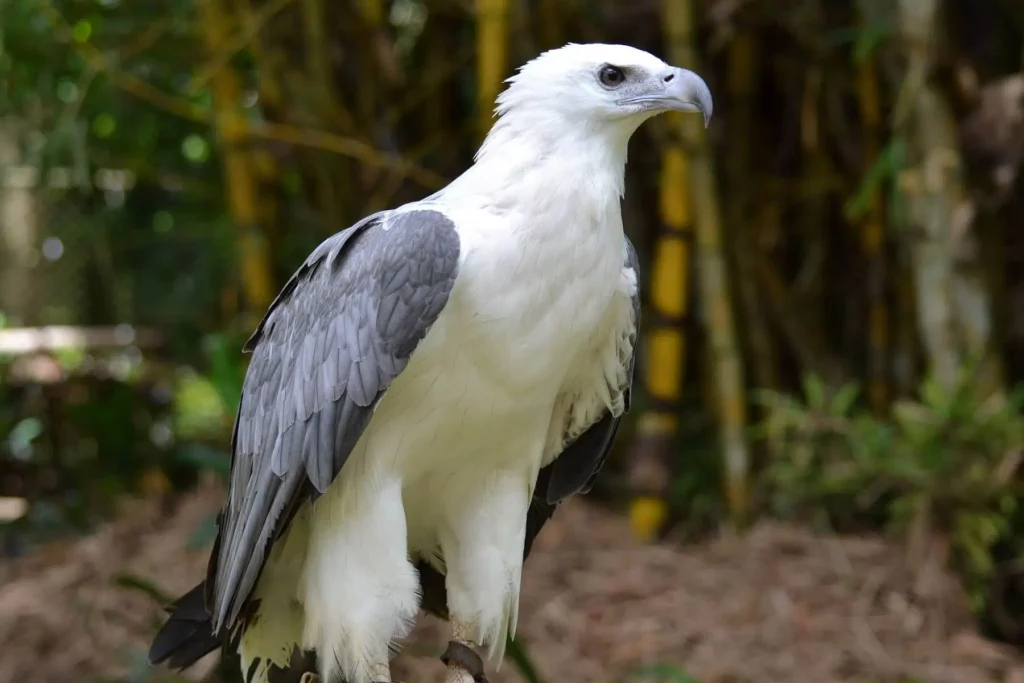
- Scientific name: Haliaeetus leucogaster
- Size: 26 – 31 inches
- Wingspan: 5.8 to 7.2 feet
- Conservation status: Not Endangered
The White-bellied Sea Eagles is a big bird with a white head and belly. They usually live near the ocean and wetlands in places like Southeast Asia and Australia.
These eagles are really good at catching fish, but also prefer eating other sea animals. Just like other hawks, they make their homes high up in tall trees close to places where they can see the water well.
Where to Spot White Head Hawks?
White Head hawks are found in different places of the world. But they are commonly found in Europe, Southeast Asia, Africa and Australia. You might spot them in the northern parts of Australia, when they are not breeding.
White Head Hawks prefer to have open spaces and grassy fields. Usually, they like flying over fields that do not have tall grasses. This makes it easier for the hawks to see and catch their prey.
Conclusion
White-headed hawks are eye-catching and beautiful. They can be easily spotted flying or making their nests. These hawks fly very high in the sky and have excellent eyesight. This feature makes them excellent hunters.
Their white heads allow them to blend with the surroundings. These majestic hawks keep balance in the ecosystem. They do that by hunting small animals and insects.
Therefore, these hawks are important for our world. However, some of the hawks are losing habitats because of deforestation and global warming. So, preserving them and their homes is necessary.



